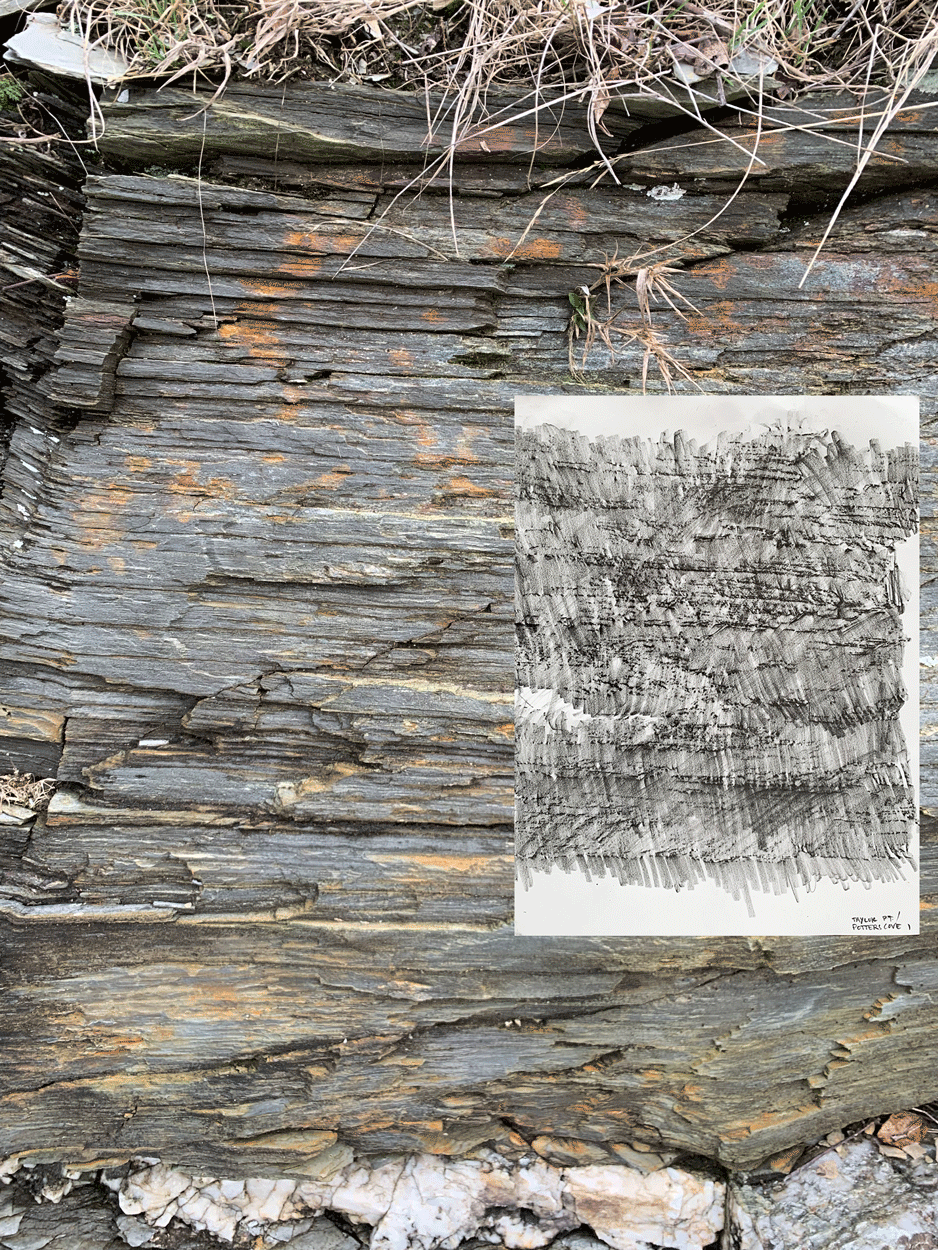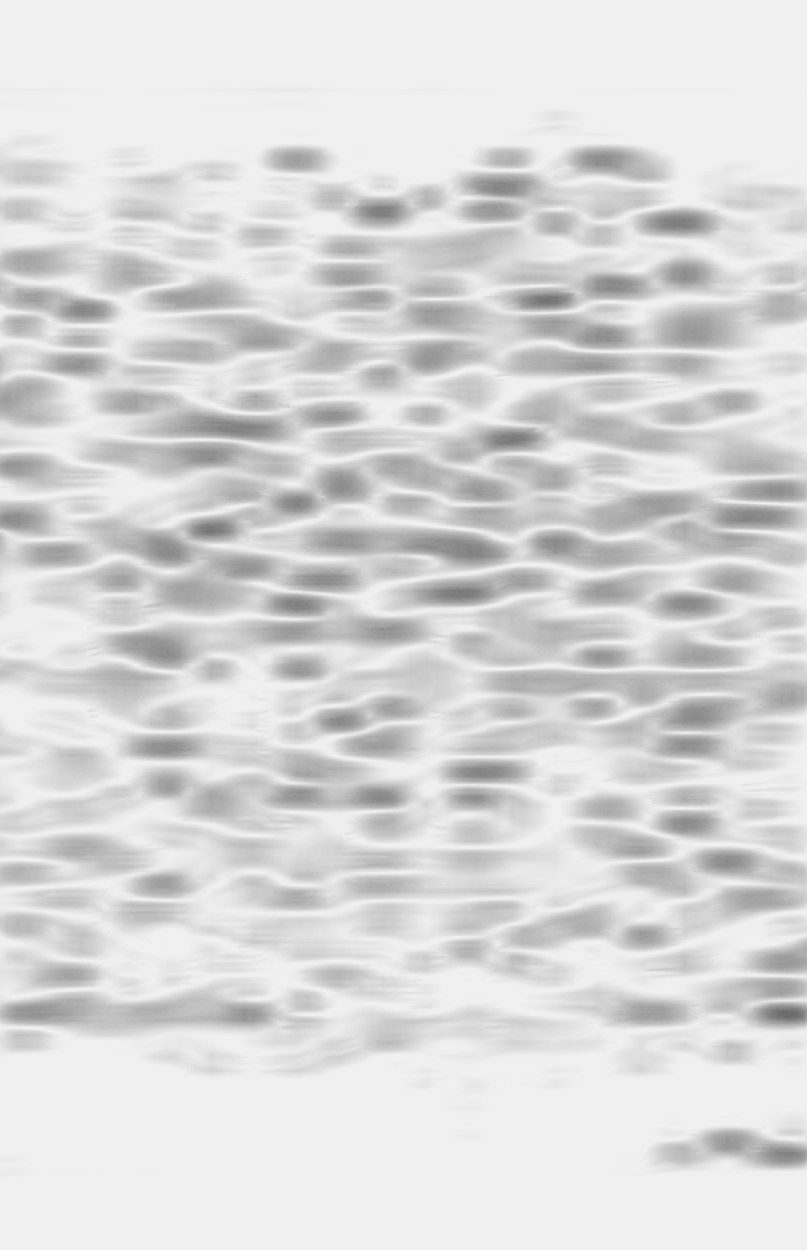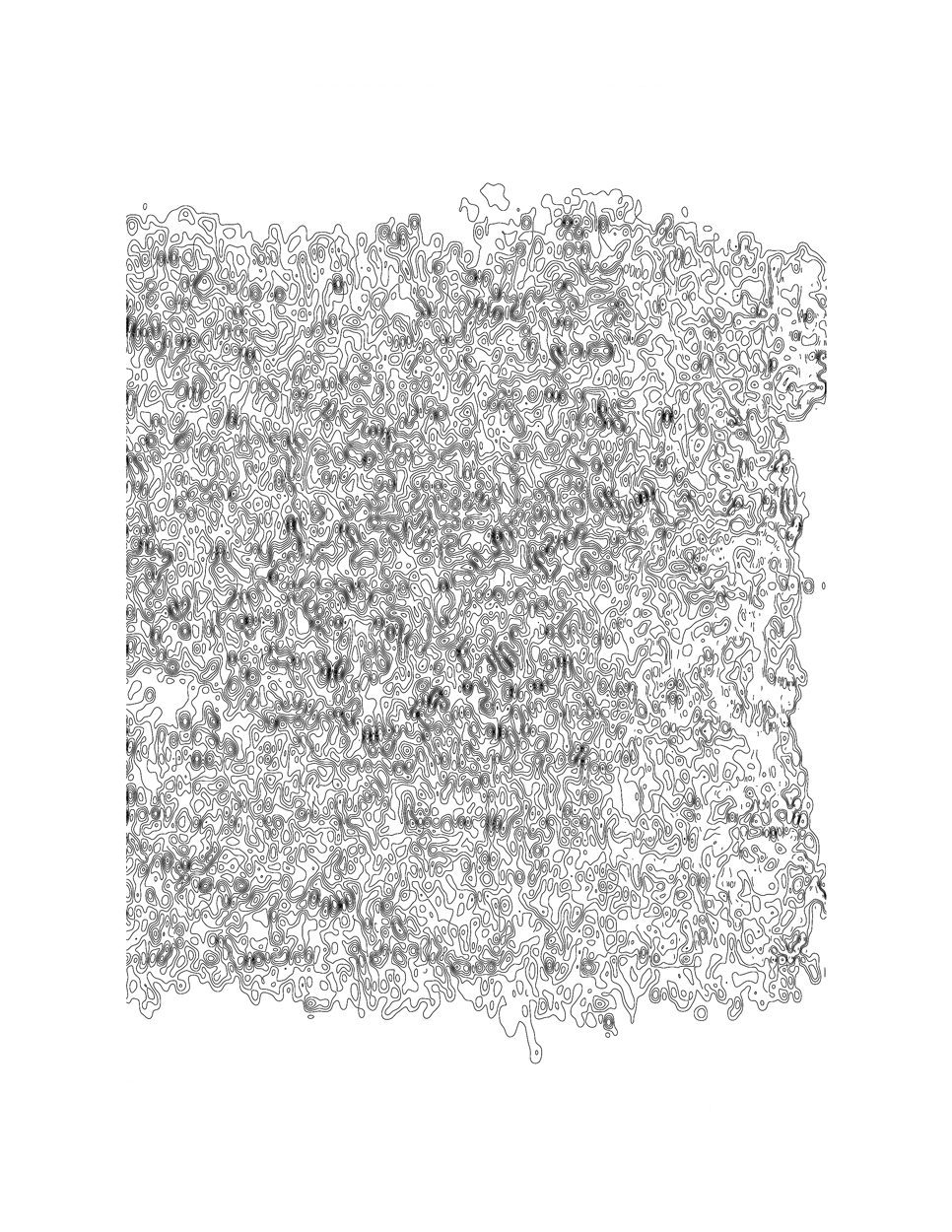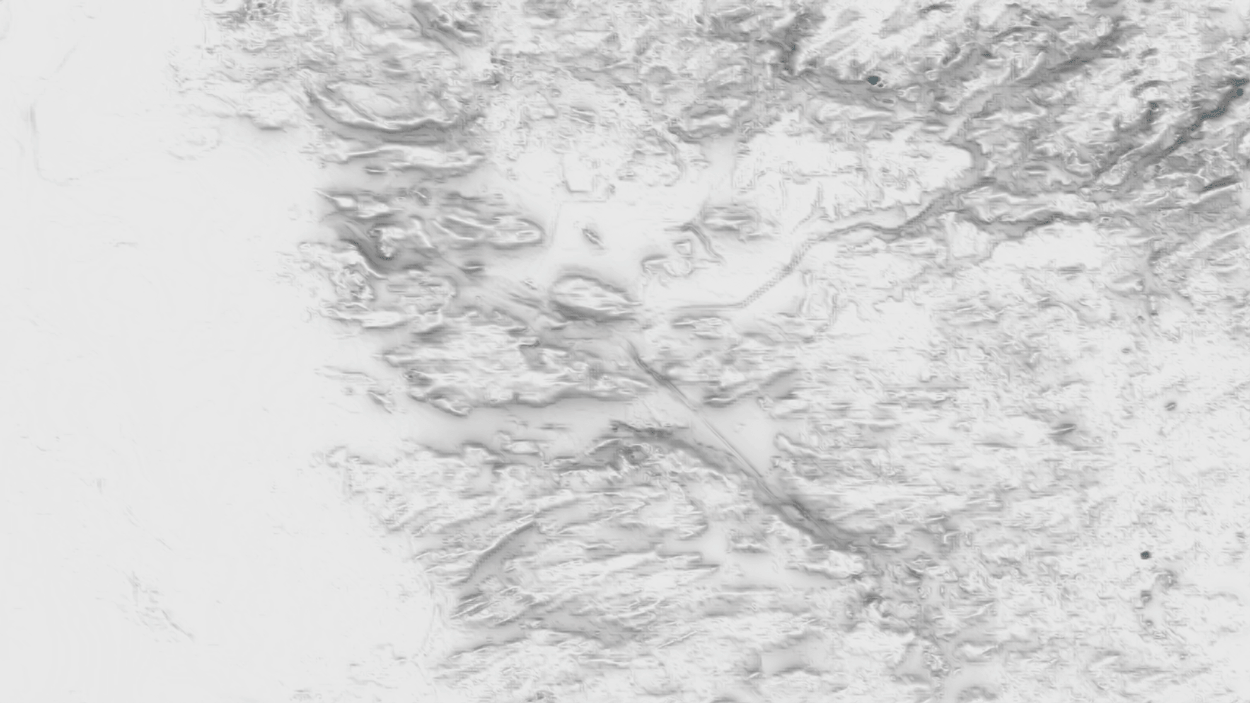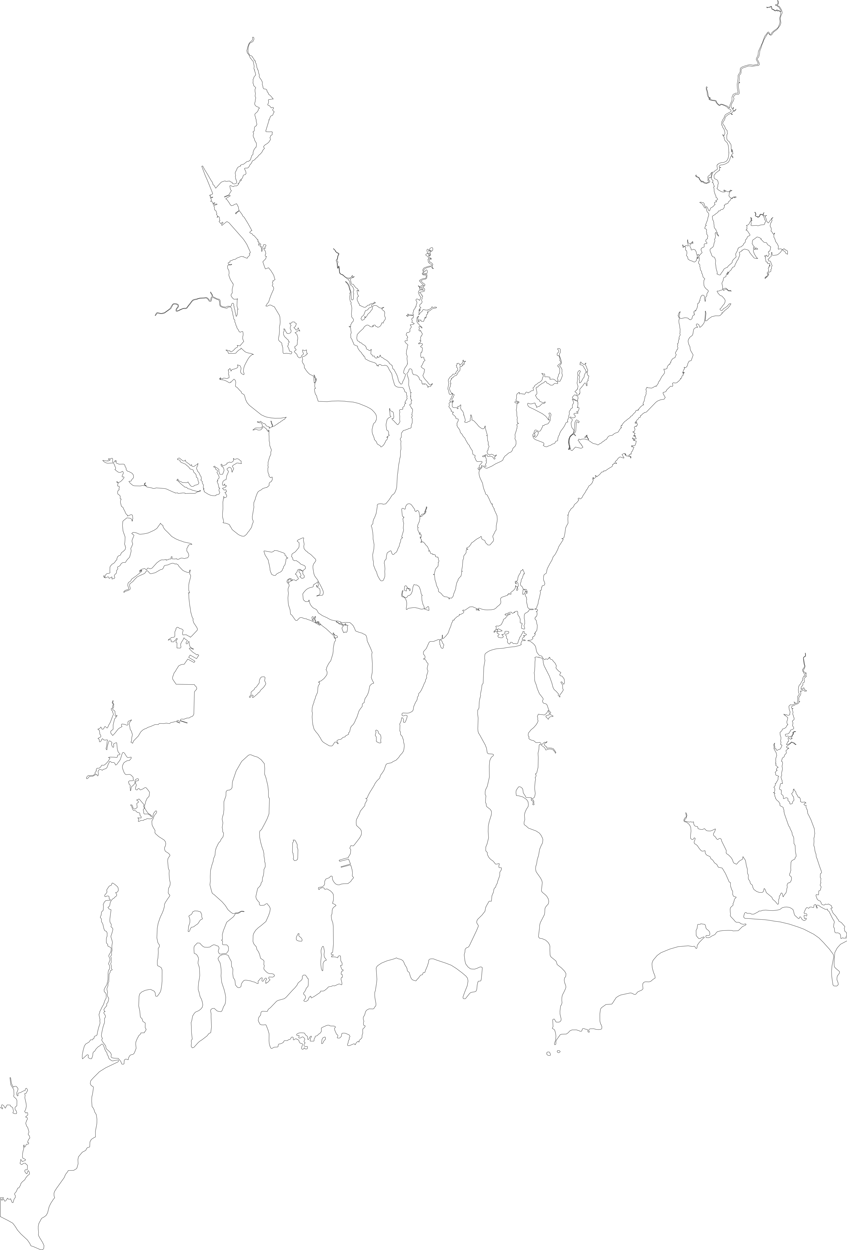SITE: WATER MEETS EARTH
This multiscalar site of inquiry focuses on the evidence of geological processes present in the land with which I am most familiar, the land forming Narragansett Bay. As New England’s largest estuary, the land and water in this area feature many points of geological and hydrological significance. Each boulder, rock, and even grain of sand can be seen as a powerful artifact of earth’s history if one takes the time to look.
These flowing water bodies have taken many shapes over the years. Their stories began long before humans ever set foot on the land, long before the land was covered with water and could even be classified as a bay.
The Narragansett Bay of today first became somewhat recognizable only 18,000 years ago after the Last Glacial Maximum. The 3500 miles of streams and rivers that travel through the watershed and drain into today’s bay are remnants of the Laurentide ice sheet that flowed over the land 18,000 years ago. This massive ice sheet carved through the existing sedimentary basin as it melted, its pressure weighing down segments of earth beneath to drop crustal blocks and form a basin and range system. The moving and melting glaciers left behind waterways in the land that formed rivers and streams. They gouged out deeper channels in the bay, exposing the older bedrock layers and leaving behind the segments of land we now see as Conanicut and Aquidneck islands. The ice pushed the land beneath it into piles of sand and gravel, forming the coastal end moraines of southern Rhode Island [Save the Bay].
Eventually the ice retreated as the planet continued to warm, leaving behind a freshwater flood that formed what is known as Lake Narragansett. This proglacial lake only lasted for approximately 500 years before rising sea levels flooded the area and filled the valley, giving the bay the brackish water it contains today and earning it the classification of a ria, or a drowned river valley that is open to the ocean. The flooded glacial valleys beneath the surface of the bay continue to shift along the faults in its basin and range system [Save the Bay].
The production of sedimentary rock from primordial Earth-rock is the process by which the Earth has acquired a tangible history. More: this his- tory includes a detailed record of the evolution of life, and, ultimately, of intelligent beings, a story more intricate by far than the recording of physical and chemical phenomena. -Jan Zalasiewics, The Earth After Us
The prequel to what I will call this “geologically modern” story of the bay goes even further back in time, before the bay even remotely resembled its current form, before human life was even close to evolving. Geologists have discovered artifacts at Beavertail Point in Jamestown that provide evidence of a previous transcontinental link with Europe and Africa hundreds of millions of years ago in the form of trilobite fossils. These non-swimming ancient horseshoe crabs were not native to America, as their fossils matched those of trilobites found in the rocks of Spain, Portugal, and Morocco. During the Paleozoic Era 300 million years ago, North America, Europe, and Africa collided to form the supercontinent Pangaea, during which Rhode Island acted as a “bumper in the crash,” with its some of its bedrock sliding underneath and some sliding on top of an ancient African mountain range [Lewis].
In the pre-prequel of this dramatic tale of collision (525 million years ago), the land that is now Rhode Island was once part of a volcanic island chain in the Southern Hemisphere that gradually (over hundreds of millions of years) inched closer and closer north to join what is now Africa, and then shifted westward to join what is now North America [Lewis].
These coastal areas provide us with pieces of physical evidence, small scenes of the cataclysmic drama of which we are largely unaware that has unfolded over millions of years. The artifacts hint to us that the earth is not static, but is a living, breathing being whose elements are constantly shifting and rearranging. The in-between place where land meets water offers a wealth of geological information and artifacts that bring the faraway concept of time down to earth. I hope to uncover more of the earth’s hidden stories at this site of inquiry.
“The new universality consists in feeling that the ground is in the process of giving way.”
― Bruno Latour, Down to Earth: Politics in the New Climatic Regime
